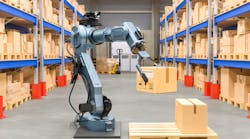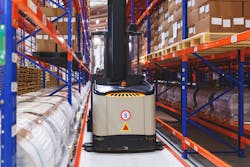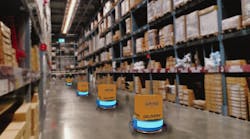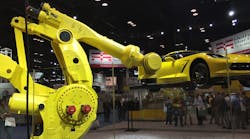It's increasingly common for warehouse managers to implement robots to supplement their human workforces. These specialized machines are able to keep productivity levels high while maintaining consistent output.
Warehouse executives often decide to invest in automation solutions when they want to ramp up production without needing to hire new workers and go through the onboarding process with them.
While robots meet production demands, they also serve the dual purpose of reducing workplace injuries related to lifting, falls, and other hazards.
1. Reducing Lifting Injuries
The majority of warehouse workers are familiar with lifting materials using equipment or by hand. Even when employees receive training with proper lifting techniques, accidents can happen and musculoskeletal-related injuries are not uncommon.
The U.S. Bureau of Labor Statistics (BLS) examined the incidences of musculoskeletal injuries that require taking time off from work. The organization clarified that these types of injuries happen due to overexertion or repetitive motion.
The agency found that the part of the body most affected by musculoskeletal injuries varied depending on the occupation. Back injuries comprised the majority of injuries, accounting for 38.5% of all musculoskeletal incidents suffered at work in 2016.
Warehouse robots could assist with alleviating workers' injuries caused by physical fatigue as many of these machines are specifically designed to lift heavy objects.
2. Increasing Efficiency While Maintaining Safety
Robots have a variety of intelligent features that help them stay aware of obstacles in the environment while moving.
A team at NASA built three robots plus the software needed to operate them. The machines are particularly well suited to facilities like shipping warehouses; they can transport a cart loaded with items to the place where a human worker loads the stuff onto a truck for off-site distribution to its destination.
The associated software that controls the robots knows where the packages are in a warehouse, as well as the trucks used to transport things where they need to go. It can identify any areas where there are backups and respond accordingly—keeping things running smoothly while avoiding bottlenecks.
A triple-check safety feature developed by NASA and Carnegie Mellon triggers robots to automatically shut down before making contact with a person or object. The designers of this robotic system say workers could apply it to any piece of moving equipment without needing to invest in new machines. That aspect could also increase safety since it allows people to keep working with the machinery they already know well.
3. Minimizing Incidents of Falls From High Levels
Falls are frequently associated with warehouse injuries. One common scenario is that workers fall after using forklifts to reach items on high shelves.
The construction teams tasked with building new warehouses often look for ways to maximize available space. As e-commerce brands continue to expand their offerings to meet expectations, they need more room to keep those items organized.
Some companies find that vertical structures that extend several stories into the air work best. That's particularly true in cases with limited space, such as crowded urban areas.
The company develops robots made to work in warehouses that span multiple levels instead of just one. These machines reach materials that are too high for humans, then bring the items down for warehouse workers to take.
This setup doesn't eliminate the possibility of falls if someone slips or trips on something while walking. However, it eliminates the number of tasks employees perform at dangerous heights.
4. Managing Worker Fatigue Issues
Worker fatigue is a problem that's only partially exacerbated by the type of job performed. Although employees fatigue more quickly when performing exceptionally physically demanding or precise tasks, off-the-job factors may be at play too.
For example, if a warehouse worker is a new parent, they may not be getting adequate rest. Unmanaged insomnia may also contribute to tiredness at work.
A 2017 study examined the link between worker fatigue and occupational accidents and injuries. It found that people are most at risk when they don't take breaks often enough and when breaks are too short. Moreover, the risk rises if a person works a shift exceeding 11 hours, or one that occurs at night.
Another advantage of robots is that they can work for long stretches without stopping. They also don't show the declines in performance that can happen when people start to get tired.
If companies notice injury reports associated with people performing certain tasks or working during particular hours, they could investigate the issue and see if it's worthwhile to invest in robots to make worker fatigue less problematic.
For example, a collaborative robot could work alongside a human and handle the tasks in a warehouse that is the most physically demanding for people.
Companies still need to give humans adequate rest breaks, of course. But robots can cut down on the chances of humans getting pushed to their limits too often.
There are numerous ways that warehouse professionals can boost the safety of workers with help from robots. As technology continues to progress, more opportunities undoubtedly will be developed and implemented.
















